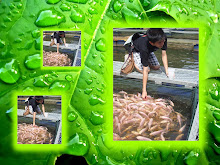
Oil spills often result in both immediate and long-term environmental damage. Some of the environmental damage caused by an oil spill can last for decades after the spill occurs.
Here are some of the most notable environmental damages typically caused by oil spills:
Oil Spills Damage Beaches, Marshlands and Fragile Marine Ecosystems
Oil spilled by damaged tankers, pipelines or offshore oil rigs coats everything it touches and becomes an unwelcome but long-term part of every ecosystem it enters.
When an oil slick from a large oil spill reaches the beach, the oil coats and clings to every rock and grain of sand. If the oil washes into coastal marshes, mangrove forests or other wetlands, fibrous plants and grasses absorb the oil, which can damage the plants and make the whole area unsuitable as wildlife habitat.
When some of the oil eventually stops floating on the surface of the water and begins to sink into the marine environment, it can have the same kind of damaging effects on fragile underwater ecosystems, killing or contaminating many fish and smaller organisms that are essential links in the global food chain.
Despite massive clean-up efforts following the Exxon Valdez oil spill in 1989, for example, a 2007 study conducted by the National Oceanic and Atmospheric Administration (NOAA) found that 26, 000 gallons of oil from the Exxon Valdez oil spill was still trapped in the sand along the Alaska shoreline.
Scientists involved in the study determined that this residual oil was declining at a rate of less than 4 percent annually.
Oil Spills Kill Birds
Oil-covered birds are practically a universal symbol of the environmental damage wreaked by oil spills. Any oil spill in the ocean is a death sentence for sea birds. Some species of shore birds may escape by relocating if they sense the danger in time, but sea birds that swim and dive for their food are sure to be covered in oil. Oil spills also damage nesting grounds, which can have serious long-term effects on entire species. The 2010 BP Deepwater Horizon offshore oil spill in the Gulf of Mexico, for example, occurred during prime mating and nesting season for many bird and marine species, and the long-term environmental consequences of that spill won't be known for many years. Oil spills can even disrupt migratory patterns by contaminating areas where migrating birds normally stop.
Even a small amount of oil can be deadly to a bird. By coating the feathers, oil not only makes it impossible for birds to fly but also destroys their natural waterproofing and insulation, leaving them vulnerable to hypothermia or overheating. As the birds frantically try to preen their feathers to restore their natural protections they often swallow some of the oil, which can severely damage their internal organs and lead to death. The Exxon Valdez oil spill killed somewhere between 250,000 and 500,000 seabirds, plus a number of shore birds and bald eagles.
Oil Spills Kill Marine Mammals
Oil spills frequently kill marine mammals such as whales, dolphins, seals and sea otters. The deadly damage can take several forms. The oil sometimes clogs the blow holes of whales and dolphins, making it impossible for the animals to breathe properly and disrupting their ability to communicate. Oil coats the fur of otters and seals, leaving them vulnerable to hypothermia.
Even when marine mammals escape the immediate effects, an oil spill can cause damage by contaminating their food supply. Marine mammals that eat fish or other food that has been exposed to an oil spill may be poisoned by the oil and die or can experience other problems.
The Exxon Valdez oil spill killed thousands of sea otters, hundreds of harbor seals, roughly two dozen killer whales and a dozen or more river otters. Even more troubling in some ways, in the years after the Exxon Valdez oil spill scientists noted higher death rates among sea otters and some other species affected by the oil spill, and stunted growth or other damage among other species.
Oil Spills Kill Fish
Oil spills often take a deadly toll on fish, shellfish and other marine life, particularly if large numbers of fish eggs or larvae are exposed to the oil. The shrimp and oyster fisheries along the Louisiana coast were among the first casualties of the 2010 BP Deepwater Horizon offshore oil spill. Similarly, the Exxon Valdez oil spill destroyed billions of salmon and herring eggs. Those fisheries still have not recovered.
Oil Spills Destroy Wildlife Habitat and Breeding Grounds
The long-term damage to various species, and to the habitat and nesting or breeding grounds those species depend upon for their survival, is one of the most far-reaching environmental effects caused by oil spills. Even many species that spend most of their lives at sea—such as various species of sea turtles—must come ashore to nest. Sea turtles can be harmed by oil they encounter in the water or on the beach where they lay their eggs, the eggs can be damaged by the oil and fail to develop properly, and newly hatched young turtles may be oiled as they scurry toward the ocean across an oily beach.
Ultimately, the severity of environmental damages caused by a particular oil spill depends on many factors, including the amount of the oil spilled, the type and weight of the oil, the location of the spill, the species of wildlife in the area, the timing or breeding cycles and seasonal migrations, and even the weather at sea during and immediately after the oil spill. But one thing never varies: oil spills are always bad news for the environment.


0 comments:
Post a Comment